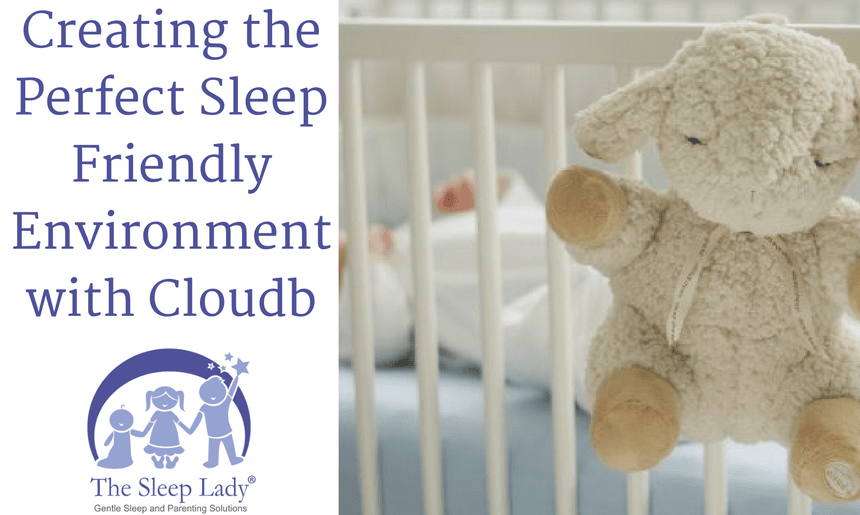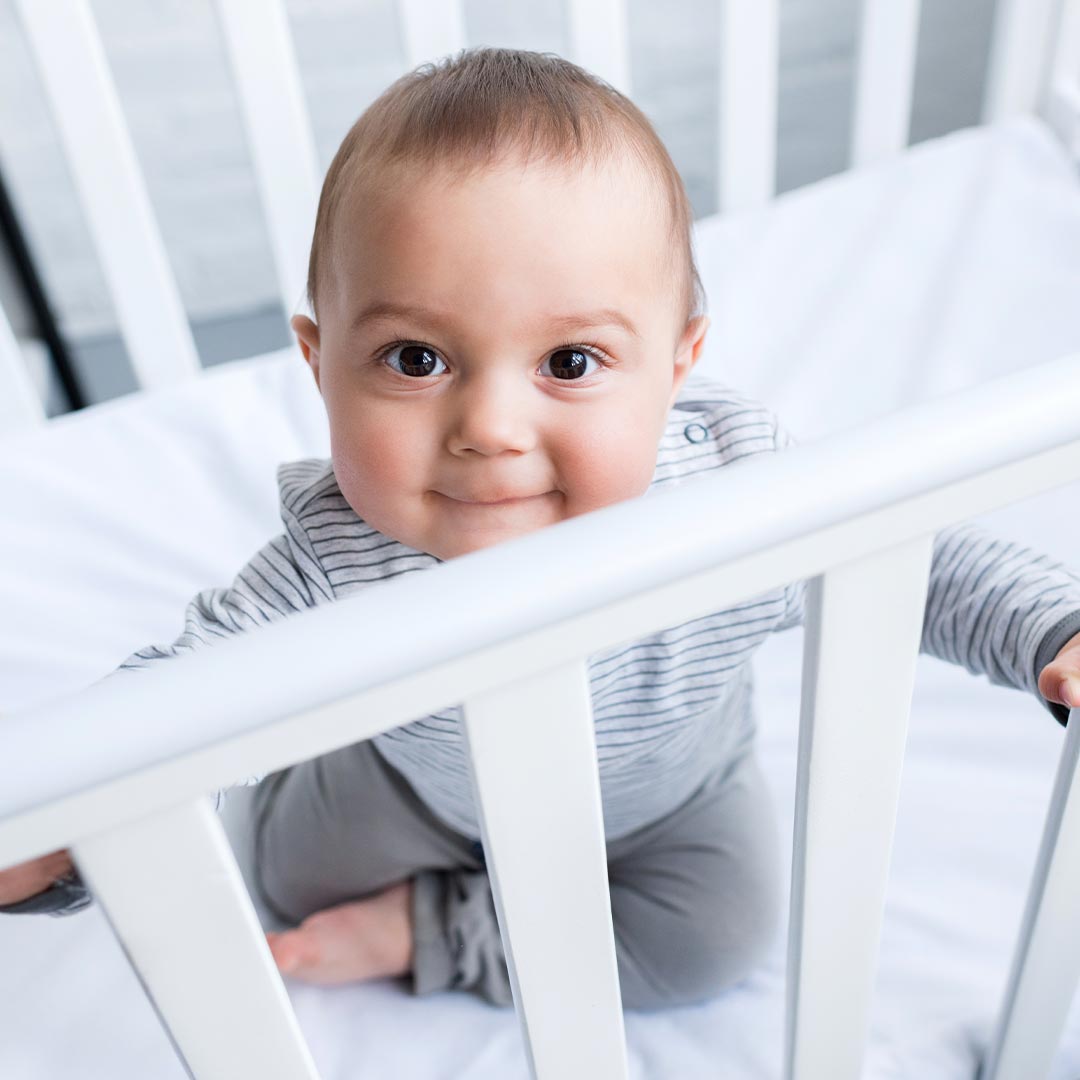One of the best things you can do to help your child learn to sleep is to set them up with a “sleep-friendly environment”. This means two things: an environment that is both conducive to sleep and is safe. By putting your baby to sleep in a sleep-friendly environment, you are setting the stage for success.
Darkness
The first step to creating a sleep friendly environment is to have a dark room – the darker the room the better. A dark room works with your child’s circadian rhythm instead of against it.
- If your child is young enough to still need a nighttime feeding, practice doing so with as little light as possible, to avoid reinforcing nighttime wakings.
- Keep your older child in a dark room until it is an appropriate wake up time. A Stay Asleep Buddy can help young children who are not able to tell time know when it’s time to get up.
- Blackout blinds or curtains are a great tool to help darken the room.
White Noise
White noise can be very soothing and helpful, especially for babies when they are learning to fall asleep and put themselves back to sleep during the night. Babies spend about nine months in the womb surrounded by constant noise. Middle of the night silence is brand new for them and may take some time to get used to. The bonus of white noise is that it can also block out other noises within and outside of the house – rambunctious toddlers playing close by, a loud vehicle or street noises, etc.
- When choosing a white noise machine, look at how many sounds it offers. Your baby may prefer some sounds over others.
- Look for a machine that has the option to play sound continually so your baby is sure to wake to the same soothing environment in the middle of the night. Or try an option like the Sleep Sheep Smart Sensor that turns back on when it sensing your child stirring.
Temperature
Babies find it just as difficult to sleep as adults when the room temperature is either too hot or too cold. Since they are still learning sleep skills, and because babies aren’t able to regulate their body temperature as easily as adults, temperature is even more important for them.
- Aim to keep the room between 68-72 degrees for sleep.
- Keep the way you are dressing baby for bed in mind. If they’re dressed in 2 layers, plus a sleep sack or swaddle, you may want to lower the temperature even more.
Surroundings
What surrounds a baby in their sleep environment is incredibly important for setting the stage for great sleep skills. Mobiles and invigorating toys in or attached to your baby’s crib can send the message that crib-time is for playtime and for “figuring out” these objects rather than sleeping. The same is true with toys and decorations around the room.
- Decorate the room in a soothing manner to avoid stimulation at bedtime.
- Put toys away and close the closet door to further remove outside distractions.
- Consider providing your child with a lovey like one of these from Cloudb, to provide a bit of comfort and consistency during sleep.
When the environment is optimal for sleep, you have taken the first important step in helping your child learn solid sleep skills!
In celebration of the launch of our new online resource, The Gentle Sleep & Parenting Center, we are excited to bring you today’s giveaway from Cloudb:




